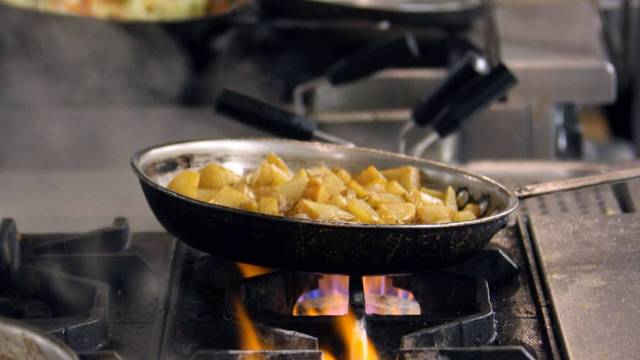Romantic Restaurants Islamabad: Perfect Dining Destinations for Pairs
Romantic Restaurants Islamabad: Perfect Dining Destinations for Pairs
Blog Article
Savor Genuine Eastern Food With a Pan-Asian Twist for a Culinary Journey
Starting a culinary journey through authentic Eastern food, boosted with a Pan-Asian twist, provides an one-of-a-kind possibility to check out the rich tapestry of tastes that define the region's diverse culinary traditions. This experience invites you to appreciate the beautiful equilibrium of preferences-- pleasant, salted, spicy, and sour-- balanced by fragrant herbs and flavors. Picture the innovative blend of Thai curry and ramen or the unforeseen delight of sushi burritos. As you contemplate these attracting meals, think about the cultural stories and historical impacts that shape them, each bite providing a story waiting to be discovered.

Discovering Pan-Asian Tastes
In the world of worldwide gastronomy, Pan-Asian cuisine attracts attention for its remarkable variety and the harmonious interaction of tastes from numerous Eastern cultures. This cooking strategy celebrates the one-of-a-kind ingredients and rich practices found across the continent, developing a tapestry of preferences that is both intriguing and enjoyable. Key to Pan-Asian cuisine is its capability to balance contrasting tastes-- pleasant, salted, spicy, and sour-- while highlighting the freshness and quality of each active ingredient.
From the umami-rich soy sauce of Japan to the intense chili peppers of Thailand, Pan-Asian cuisine uses an extensive palette of flavors. These elements are usually integrated in innovative ways, enhancing dishes with layers of intricacy. As an example, the use of great smelling herbs such as lemongrass and cilantro, common in Vietnamese and Thai cuisine, includes a revitalizing brightness to meals, while the unification of coconut milk supplies a luscious, abundant appearance.
The focus on fresh fruit and vegetables and aromatic seasonings makes certain that each meal is not only a banquet for the taste yet likewise for the senses. Pan-Asian food welcomes diners to start a cooking trip, checking out the huge and varied landscapes of Oriental gastronomy with every bite.
Blend Meals to Attempt
While Pan-Asian food is commemorated for its standard tastes, the contemporary culinary landscape is progressively embracing fusion dishes that mix these timeless aspects with influences from various other areas. This ingenious approach not only honors the rich heritage of Eastern culinary arts yet likewise presents novel preference experiences that interest modern tastes.
A prime example of such a blend dish is the Korean-Mexican taco, where marinaded bulgogi beef is covered in a warm tortilla, topped with kimchi and a spicy gochujang-infused salsa. This mix weds the strong, full-flavored flavors of Korea with the vibrant, fresh components of Mexican food. Likewise, sushi burritos have actually gotten appeal, amalgamating the fragile creativity of Japanese sushi with the passionate, hand-held ease of a burrito, usually including fusion ingredients like tempura shrimp and avocado with a drizzle of wasabi mayo.
One more notable meal is Thai curry ramen, which instills the velvety, fragrant spices of Thai curry into the comforting brew of conventional Japanese ramen, developing a harmonious mix that entices the senses. These blend recipes expand beyond mere novelty; they stand for a culinary discussion between cultures, encouraging exploration and development in the globe of Pan-Asian food.
Important Components and Spices
To genuinely value Pan-Asian cuisine, one should comprehend the necessary ingredients and flavors that create its foundation. This varied cooking style draws from a rich tapestry of Oriental traditions, employing an unified mix of appearances and tastes. Secret ingredients include soy sauce, fish sauce, and oyster sauce, which impart a savory umami deepness necessary to Eastern meals. Complementary to these are rice vinegar and mirin, offering a fragile level of acidity and sweet taste.
Aromatic elements are crucial, with garlic, ginger, and lemongrass being ubiquitous throughout various Pan-Asian dishes. These active ingredients supply a fragrant base that improves the complexity of flavors. Flavors such as star anise, cardamom, and cinnamon present heat and personality, resembling impacts from areas like China and India.

Cooking Techniques and Tips
Understanding the art of Pan-Asian cuisine requires knowledge with its distinct food preparation techniques, each adding to the dynamic dinner near me tapestry of tastes this cooking custom is commemorated for. Central to these approaches is the stir-fry, a rapid food preparation technique that maintains the nutritional stability and vibrant colors of ingredients. Making use of a wok, the stir-fry technique permits even warmth circulation, essential for accomplishing the particular appearance and taste balance of Pan-Asian meals.
An additional fundamental technique is steaming, especially widespread in Chinese food. This mild technique keeps the natural flavors and nutrients of active ingredients, making it excellent for fish and shellfish and veggies. Dumplings, a cherished staple, often take advantage of steaming, resulting in soft, succulent structures.
Barbecuing, additionally integral, imparts smoky depths to dishes such as Korean bulgogi or Japanese yakitori (Instagrammable restaurants Islamabad). This strategy commonly entails marinating components, enabling tastes to pass through deeply prior to food preparation over an open flame or hot plate
Finally, grasping the art of balancing tastes-- internet wonderful, sour, salted, bitter, and umami-- is vital. Appropriately layering these components can elevate a dish from ordinary to phenomenal, providing a complex and pleasing cooking experience that embodies the significance of Pan-Asian cuisine.
Dining Experiences Worldwide
Around the world, Pan-Asian food uses an unparalleled eating experience, celebrated for its rich tapestry of flavors and dynamic discussions. This culinary phenomenon has actually gone beyond social borders, catching the hearts and tastes of food enthusiasts worldwide. In cosmopolitan cities fresh York, London, and Sydney, Pan-Asian restaurants serve as fusions where culinary customs from Thailand, Japan, China, and past assemble, offering restaurants with a diverse mix of meals that highlight the area's diversity.
The international charm of Pan-Asian food depends on its capacity to offer both credibility and advancement. Chefs skillfully marry traditional ingredients such as lemongrass, soy sauce, and miso with contemporary strategies, resulting in recipes that are both acquainted and refreshingly new. This blend allows diners to start a cooking journey that appreciates heritage while welcoming modernity.
Additionally, dining experiences are elevated via thoughtfully designed atmospheres that reflect the values of Pan-Asian aesthetic appeals. From minimalist Japanese-inspired insides to vibrant Thai-themed rooms, each dining establishment supplies a More Info distinct atmosphere that matches the cooking offerings. Consequently, patrons are not merely eating a dish but partaking in a cultural experience, making Pan-Asian eating a really global phenomenon.
Verdict
The exploration of Pan-Asian cuisine provides an extensive understanding of the intricate interplay of flavors and culinary traditions throughout Asia. By welcoming fusion dishes such as Thai curry ramen and sushi burritos, the culinary trip not only highlights the adaptability of conventional ingredients yet additionally showcases innovative modern strategies. This gastronomic experience, improved by cooking approaches and essential seasonings, provides a distinct opportunity to value the multiculturalism and cooking creativity that specify Pan-Asian food on a global scale.
Embarking on a culinary trip via genuine Eastern cuisine, boosted with a Pan-Asian twist, provides an one-of-a-kind opportunity to discover the rich tapestry of tastes that define the area's varied cooking practices.In the realm of international gastronomy, Pan-Asian food stands out for its exceptional variety and the unified interaction of tastes from different Eastern societies. Key to Pan-Asian cuisine is its capacity to balance different tastes-- wonderful, salty, spicy, and sour-- while highlighting the quality and quality of each component.

Report this page